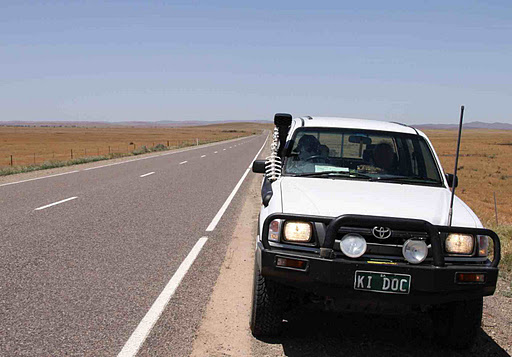South Australia is huge & not surprisingly this poses problems providing a response to serious trauma in the country. Thankfully rural doctors are mostly well-trained and thrive on the challenge of delivering excellent emergency care in their local hospitals…and if needed, can call upon the retrieval service to transfer critically unwell patients. The Statewide retrieval service has been re-invented in recent years, with MedSTAR now offering a world class service rivalling other States. Certainly the improvement in service delivery has been noticed from where I stand, as a rural doctor in country SA.
However, I wonder if there’s scope to improve things even further? In the UK, an entity called BASICS (British Association Immediate Care Scheme) enlists the skills of doctors with an interest in prehospital medicine & trauma to provide medical expertise at the roadside. BASICS personnel don’t replace paramedics or retrieval services – rather they “value add” to a situation – particularly when paramedic skills are exhausted and retrieval services have yet to arrive (see the BASICS DOC blog for more details). In Australia, the failure to call local doctors (many with critical care/anaesthetic skills) has been slammed in the response to the Kerang train crash disaster in 2007.
If the UK, with it’s small landmass, huge population and plethora of aeromedical and land-based retrieval services has a need for a service like BASICS, surely there’s more of a need in rural Australia where distances are greater and retrieval may take hours, not minutes? I posted on this recently on RRMEO, the excellent educational resource from ACRRM.
Currently, most trauma cases are dealt with by paramedics (and in the bush, these are often volunteers, not paid personnel) and a decision made to either retrieve direct from the scene (primary retrieval) or else transfer the victim to a rural hospital (where they may require secondary retrieval to definitive care). On occasions, local rural doctors may be called to assist at the roadside. Or not, as in Kerang. It’s an informal process which invites problems.
There’s a potential problem with relying on the local doctor. Emergency Medicine training in rural Australia is not formalised. Some doctors have a wealth of EM experience – some have barely any. Calling the local doctor may be a good thing…or it may not add much. Dr Peter Arvier in Tasmania has championed the need for EM training in rural Australia (demonstration of training is needed for rural docs practicing obstetrics, anaesthetics and surgery). Improving EM training is probably a good thing for the bush, although I hope old farts like me can be grandfathered if they bring in a rural EM diploma!
On top of this, a doctor attending an incident as the ‘oncall’ is still responsible for patients presenting to the local hospital. I’ve been called out to incidents 60km away from the hospital…and whilst happy to attend, I’ve had to ensure that someone else can cover in my absence.
In South Australia there has been an embryonic scheme developed by Dr Peter Joyner, known as RERN (Rural Emergency Responder Network) drawn from the ranks of rural doctors. These guys make themselves available to be called by SA Ambulance at the roadside, in addition to their usual oncall responsibilities. It’s a good idea, but I think doesn’t go far enough…the rural doctor workforce represents a hugh asset which is underused. Sure there are ad hoc arrangements (‘Help! We need a doc’) but without formalised training and equipment appropriate for the prehospital environment, doctors risk becoming ‘enthusiastic amateurs’ (I’m one!).
 |
| KI DOC is ready and waiting for your trauma call! |
Whilst many rural doctors keep up-to-date by attending courses such as EMST, APLS, MOET, RESP etc, it has to be acknowledged that the prehospital environment is quite different to operating in the safety of a resus bay in the hospital. Prehospital doctors need to be familiar with rapid response driving, radio use, scene safety, extrication and working in austere environments etc. The UK BASICS scheme recognises this, encouraging training such as the UK’s DipIMC (although having read what’s involved, I reckon this could be more of a disincentive to us rural docs…better to just ensure they’ve got the right kit, understand the prehospital environment, then get them out there making a difference!)
I’ve alluded to the need for more crossover in training & equipment between various services (ambulance-retrieval-rural workforce) elsewhere on this blog (see “Keeping It Simple“). On RRMEO this topic was discussed with John Mac, who felt that it would be resisted by State ambulance services. I think this then begs the question – how much is the rural workforce integrated with State/National resources when a disaster strikes? As Dr Chris Swan recently opined in Australian Doctor :
I am particularly interested in how this sort of scheme would be received in rural Australia. What do others think? Has this idea got legs?
Bottom line – rural doctors are not infrequently called to attend to backup the ambos. Better that the doctors attending are well-trained, well-equipped and enthusiastic…not the present ‘we don’t need you…oh hang on, yes we do‘ approach which relies on the oncall A&E doctor.
That’s just not good planning.